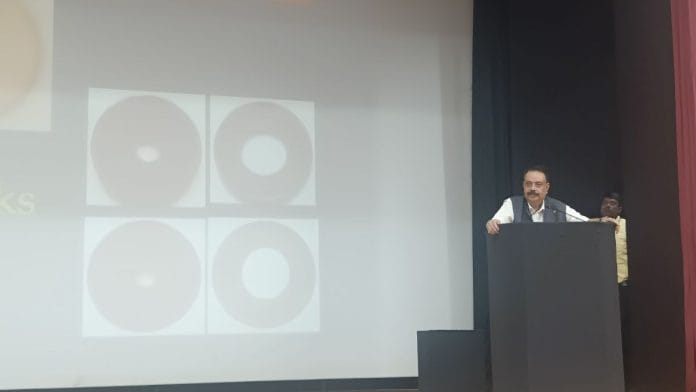New Delhi: A new study by numismatist and veteran archaeologist BR Mani is going to change the way historians have studied the existence of gold coins. Often first traced to the Kushan period — 1st-3rd century CE — his study claims they existed 3,000 years before the widely accepted timeline.
“Gold coins were widely used during the Harappan and Rigvedic period. Our tradition can not be just based on fantasy. Thousands of years of Vedic, post-Vedic and early historic literature mention about Nishka, which was a gold coin,” Mani said, speaking at the National Museum’s monthly public lecture, titled Identification of Nishka: The earliest Indian Gold Coins, on Thursday. Among the audience were archaeologists KN Dixit, DV Sharma, Arvin Manjul, and Sanjay Manjul, and several archaeology students.
Mani’s study pushes back the origin of Indian gold coinage back to the 3rd millennium BCE.
“Rig Veda and other Vedic literature, to Panini and Patanjali, mentioned about the Nishka, which represents the earliest Indian gold coins,” he said.
Mani’s hour-long lecture explored the fascinating discovery of Nishka.
He delved into the historical and numismatic significance of the early gold coins and their role in the evolution of Indian economic history.
Mani is the first to have made this proposition after conducting research on 40 gold beads out of the 1,547 stored at the National Museum.
“The recent archaeological finds including disc-shaped gold beads from the Harappan era challenge the view that gold existence in India started during the Kushan period,” he said.
The treasure trove
Mani’s research is based on a treasure hoard found in western Uttar Pradesh’s Mandi in May 2000. A large trove of gold coins was accidentally found by the local people during agricultural work. But before the local administration and ASI officials reached the site, most of the gold was looted.
According to Mani, it can be said that in emergent situations, people used to hide their treasure beneath the earth to keep it safe.
“The sheer quantity of the jewellery recovered from the site makes it the largest hoard of ancient jewellery ever found in India, if not the entire subcontinent. About 10 kilograms of this jewellery has so far reached the government,” wrote Rakesh Tiwari, former director general of the ASI, in a blog.
The gold was stored at ASI’s Central Antiquity Collection section, with parts of the collection sent to Delhi’s National Museum and the State Museum in Lucknow.
As the director general of the National Museum, Mani began his research on the gold.
“The research shows that the so-called gold disc beads with central holes found in the Harappan levels can be definitely identified with the Nishka of the Vedic times and thus go back to the 3rd millennium BCE, making it the earliest coins of not only India but of the world,” said Mani, emphasising that the pieces found in Mandi can be called Nishka.
Also read: A Partition journey from Jhang to Hisar. Avoiding bitterness helped family thrive
Nishkas
Nishkas were utilised for various purposes, including ornamentation, transactions, and gifting. They are circular, disc-shaped gold pieces, like beads. Mani gave references from Rigveda, Atharva Veda about the Nishkas.
“In Atharva Veda, the Nishka is mentioned as made of gold,” he said, adding that during the time of Panini, the wealth of a person was evaluated on the basis of Nishkas.
Mani said it is clear that Nishka was not like present-day cryptocurrencies that remain only in concept.
(Edited by Aamaan Alam Khan)






